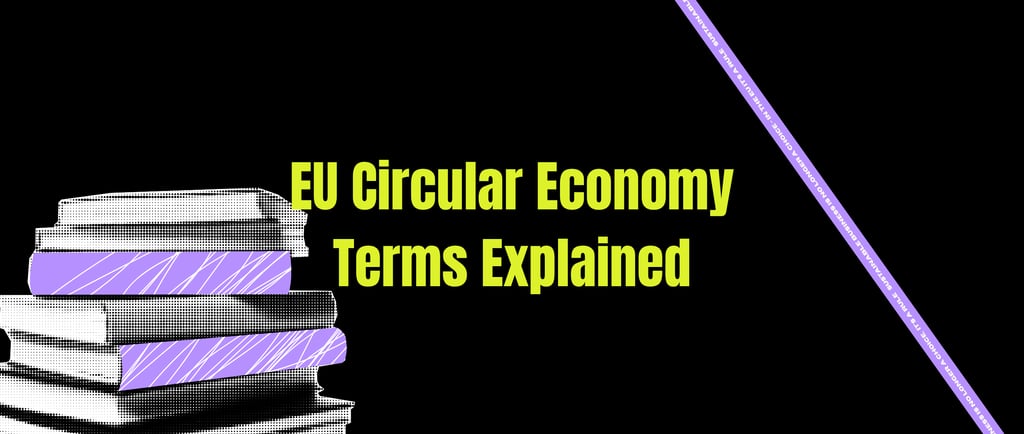EU Circular Economy Terms for Fashion Explained
Understand key EU circular economy terms shaping fashion: durability, traceability, EPR, DPP, and what they mean for your business today.
11/8/20254 min read


EU Circular Economy Terms Explained for Fashion Businesses
EU policy documents are full of terms that sound familiar but mean something very specific once written into law.
Durability. Recyclability. Traceability. Extended Producer Responsibility. They now sit at the heart of how the European Union plans to reform fashion - not as buzzwords, but as measurable performance standards.
For small brands, understanding these words is no longer optional. They define how you’ll design, produce, and sell clothing in the next few years.
Here’s what they actually mean in practice.
Circular Economy
In EU policy, the circular economy is a system where products, materials, and resources stay in use for as long as possible.
For textiles, that means extending product life through better design, reuse, repair, and recycling, rather than constant replacement
The EU Textile Strategy calls it a move from “fast consumption to value retention.” Every directive and regulation, from ESPR to EPR, builds on this idea.
For SMEs, it translates into fewer wasteful processes, longer product lifespans, and proof of material traceability.
Ecodesign for Sustainable Products Regulation (ESPR)
The ESPR sets the foundation for future textile rules.
It introduces performance criteria for durability, repairability, and recyclability, and bans the destruction of unsold goods
Every product placed on the EU market will eventually need to meet measurable design standards - meaning you’ll have to demonstrate how long it lasts, how it can be repaired, and how its materials can re-enter production loops.
Digital Product Passport (DPP)
The Digital Product Passport is one of the most important new tools under ESPR.
It’s a digital record, accessed through a QR code or NFC tag, that carries verified product information: material composition, origin, recyclability, repair options, and environmental performance
By 2027, textiles will need a DPP. For small brands, this means tracking data that might not exist yet, supplier origins, fibre types, chemical use, and care information.
The goal isn’t just traceability. It’s to make sustainability measurable and shareable across supply chains.
Extended Producer Responsibility (EPR)
EPR shifts responsibility for textile waste from governments to companies.
Brands will pay fees to cover collection, sorting, and recycling once products reach end-of-life.
The key update: these fees will be eco-modulated, meaning they’ll be lower for garments designed to last and higher for products that wear out quickly or can’t be recycled.
For SMEs, EPR means thinking about product design as part of your cost structure. The longer your products last, the less you’ll pay later.
Design for Durability
Durability is now a legal requirement under the ESPR.
The EU defines it as a product’s ability to maintain performance and usability throughout its expected lifetime, supported by repair and reuse.
In plain terms: strong stitching, colourfast fabrics, and replaceable parts.
The longer a garment can stay in use, the better its environmental profile, and the less waste you’ll have to finance through EPR.
Design for Recyclability
Recyclability means the product can be broken down into materials that re-enter production without losing quality.
For textiles, this often means simplifying fibre mixes, avoiding coatings that block recycling, and labelling fibres correctly
Brands like Filippa K already use mono-material garments or traceable blends to prepare for recyclability requirements that will be enforced through ESPR delegated acts.
Reuse and Repair
Reuse covers keeping a product in circulation through resale, donation, or rental.
Repair means fixing faults that would otherwise cause disposal.
Under EU rules, both will be part of producer responsibility, meaning brands must support or enable these activities
Small brands can comply through simple methods: offering repair vouchers, publishing maintenance tutorials, or partnering with local repair networks.
Traceability and Transparency
Traceability means tracking every step of production, from raw material to final garment.
Transparency means making part of that information public.
EU traceability is becoming mandatory through the Digital Product Passport.
It will require brands to disclose Tier suppliers' information and document environmental and social risks.
For smaller brands, this doesn’t mean full digital traceability overnight. Start with your direct suppliers and build visibility step by step.
Eco-Modulation
This term refers to how EPR fees will be adjusted based on product performance.
Under eco-modulation, brands that design durable, repairable, and recyclable products will pay lower fees, while those producing low-quality, short-lived items will pay more.
It’s a cost signal that rewards circular design and penalises waste.
Green Claims
The "Green Claims" Directive requires brands to prove any environmental statement they make.
Claims like “sustainable,” “eco-friendly,” or “climate neutral” must be backed by verifiable evidence or standardised metrics.
That means no more vague slogans, every claim must be measurable, documented, and comparable across the EU.
For SMEs, it’s safer to communicate specific facts: “100% organic cotton certified by GOTS,” “designed for 50+ washes,” or “fully repairable zipper system.” - if you have proof.
Upcycling
Upcycling isn’t an official EU term but is widely used in fashion.
It means turning existing materials or garments into new products of equal or higher value without breaking them down into raw materials
While not part of ESPR or EPR yet, upcycling contributes to waste reduction targets and can improve a brand’s repair and reuse score under national schemes.
Recycling vs. Downcycling
Recycling means converting waste into new materials of similar quality.
Downcycling produces lower-grade materials, such as turning cotton into insulation or polyester into filler.
The EU is actively supporting fibre-to-fibre textile recycling via Horizon Europe projects (e.g. STREP, PESCO-UP) and sector initiatives like EURATEX’s ReHubs, which target recycling 2.5 million tonnes through closed-loop processes by 2030.
Brands that prepare for high-quality recycling, through mono-material design or digital labelling, will soon qualify for better EPR scoring and procurement opportunities.
Take-Back Scheme
Take-back schemes allow customers to return used garments for repair, resale, or recycling.
Under EPR, all brands selling in the EU must join or finance a collection system.
For small brands, joining a collective take-back initiative, such as those operated by national producer responsibility organisations (PROs), will be the easiest route.
Resource Efficiency
This term appears across multiple EU documents, including the ESPR and Circular Economy Action Plan.
It means producing more value with fewer resources, less water, energy, and material per garment.
For SMEs, this can mean batch optimisation, fabric yield management, or shared logistics to reduce input waste.
Product Environmental Footprint (PEF)
The PEF is the EU’s method for calculating environmental impact using standardised categories, from climate emissions to water use and material depletion.
PEF data will feed into the Digital Product Passport and future labelling schemes.
Many brands are already testing it through the PEFCR for Apparel and Footwear pilot, which sets common measurement rules across Europe.
Why These Terms Matter
Each term comes with its own compliance deadline, but together they form a single direction: make fewer, better, longer-lasting products and prove it with data.
For SMEs, understanding these terms now makes future compliance easier and reduces costs later.
The EU isn’t asking for perfection - it’s asking for structure, traceability, and honesty.
Circular business doesn’t start with technology. It starts with knowing what the words really mean.
